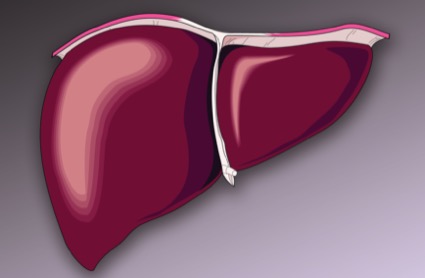
In this installment of “Expert Picks,” Ashwani K. Singal, MD, MS, a professor of medicine at the University of South Dakota Sanford School of Medicine and the chief of clinical research at Avera Health’s liver disease program, in Sioux Falls, S.D., discusses five of his favorite abstracts presented at The Liver Meeting 2022.
Abstract 132. Improving alcohol treatment engagement in alcohol-related liver disease: a pilot randomized controlled trial (Mellinger et al)
A group of researchers at Michigan Medicine evaluated the ability of a new decision support app to help patients with alcohol-related liver disease (ALD) engage in treatment for their alcohol use disorder (AUD). The app—Michigan Alcohol Improvement Network-Alcohol Reduction and Treatment (MAIN-ART)—offers two online modules: one that corrects patients’ misconceptions about alcohol use, alcohol treatment and liver health, and a second that matches patients to AUD treatments based on their preferences.
Sixty ALD patients, half of whom identified as women, were recruited from outpatient and inpatient hepatology practices for the study. All the patients had a history of drinking in the last six months but had not received any AUD treatment in the last 30 days. The researchers used double-block randomization and stratified by sex and inpatient/outpatient status.
At six months, patients using the app were more likely than controls to have engaged in AUD treatment (42.1% vs. 16.7%; P=0.06). Although there was no significant difference in overall alcohol use between the groups, participants who engaged in AUD treatment did have significantly fewer drinking days than those who did not get treatment for AUD. The retention rate for the app was 83% at three months and 68% at six months. A majority of participants (95%) felt that the app aligned with the AUD treatment they were interested in, and 91% were satisfied with the app.
The authors concluded that the MAIN-ART app was feasible and acceptable to ALD patients, and it improved rates of AUD treatment engagement and trends toward reduction in alcohol use.
Dr. Singal: Drug development for ALD patients over the last decade has improved our understanding of the disease but has not resulted in effective pharmacotherapy. Several studies have shown that controlling alcohol use is the single most important factor to improve liver disease and, consequently, long-term outcomes of these patients. However, several barriers at patient, clinician and systemic levels limit treatment of AUD in ALD patients, with only 14% to 25% of ALD patients receiving treatment for AUD (Hepatology 2020;71[6]:2080-2092; Lancet Gastroenterol Hepatol 2022;7[2]:186-195).
This is a novel and important study that shows the feasibility of using an app to overcome some of those barriers and engage patients in AUD treatment. This proof of concept should be tested in larger trials, and if validated, it would complement other digital tools to monitor alcohol use and AUD treatment.
Abstract LB 5007. Anakinra plus zinc versus prednisone for treatment of severe alcohol-associated hepatitis: a randomized controlled trial (Gawrieh et al)

This multicenter, double-blind, placebo-controlled, randomized clinical trial (ClinicalTrials.gov Identifier: NCT04072822) was conducted by the Alcoholic Hepatitis Network to examine the benefit of the interleukin-1 receptor antagonist anakinra in patients with severe alcoholic hepatitis (SAH). Adults with SAH with Model for End-stage Liver Disease (MELD) scores of 20 to 35 (n=147) were given either 100 mg of subcutaneous anakinra daily for 14 days with 220 mg of zinc sulfate for 90 days (n=74) or 40 mg of prednisone for 30 days (n=73).
The study was stopped early because the interim analysis showed a significantly lower liver transplant–free survival in the intervention arm than in the control arm (70% vs. 91%; P<0.001). There were more adverse events observed in the anakinra group, especially acute kidney injury (41% vs. 21%; P<0.0046). Among patients who died in the anakinra group, 15 (79%) had acute kidney injury.
Dr. Singal: This study is another addition to the increasing pool of negative clinical trials in the field of drug development for alcohol-associated liver disease and alcoholic hepatitis. Given that interleukin-1 is a major player in mediating inflammation in alcoholic hepatitis, the results of this study showing worse survival with anakinra are surprising. However, because the mechanisms leading to risk for acute kidney injury with the use of anakinra remain to be determined, these results may help researchers design better clinical trials to assess anakinra in patients with alcoholic hepatitis. It also remains to be seen whether the addition of pentoxifylline or N-acetylcysteine, both of which have been shown to protect renal function and reduce the development of acute kidney injury in patients with alcoholic hepatitis, would help mitigate this adverse effect (Gastroenterology 2015;149[4]:958-970).
Abstract 89. Validation of the AGA clinical care pathway to risk stratify patients with NAFLD and determine if hepatology referral is warranted at the United States population level (Alkhouri et al)
A multidisciplinary task force from the American College of Gastroenterology (AGA) recently proposed an algorithm to help primary care providers determine if a patient at risk for fibrotic nonalcoholic steatohepatitis needs a referral to a hepatologist. The algorithm uses the Fibrosis-4 (FIB-4) score plus liver stiffness measurement (LSM) by FibroScan (Echosens) to identify at-risk patients. In this study, researchers from multiple centers used the National Health and Nutrition Examination Survey (NHANES) database of adults with nonalcoholic fatty liver disease, type 2 diabetes mellitus, two or more metabolic risk factors with elevated alanine transaminase (ALT), and no history of excessive alcohol use, who had valid FibroScan measurements and laboratory values needed to calculate the FIB-4 score.
A FIB-4 score of less than 1.3 was considered low risk and greater than 2.67 was considered high risk, indicating the need for referral to a hepatologist. Patients with a FIB-4 score between the low- and high-risk categories were further evaluated with FibroScan. Patients with LSM less than 8 kPa were considered low risk, and 8 kPa or higher were considered high risk and appropriate for referral.
Of 4,368 patients analyzed in the NHANES database, 73% were low risk based on FIB-4 score. FibroScan stratified an additional 19% as low risk, leaving 8% of patients requiring a referral.
The authors concluded that this screening approach is a feasible way to identify the need for specialty care and to reduce the number of referrals.
Dr. Singal: NAFLD is the most common liver disease worldwide, with a prevalence of 31% in North America (Hepatology 2023 Jan 3. doi:10.1097/HEP.0000000000000004). With such a large population burden of NAFLD, there is a need for an algorithm to help primary care providers, internists, family physicians and gastroenterologists to identify those at high risk for advanced liver disease, so they can refer them to hepatology specialists for further management and follow-up.
This study validates the proposed AGA algorithm, confirming that only about 8% of the population with NAFLD (about 8 million people) require referral to hepatology. Although this is still an enormous caseload, it’s more manageable than seeing every person with NAFLD. For time-efficient use of this clinical care pathway by primary care providers, family practitioners and internists, it is critical to build a FIB-4 calculator within the electronic health record and alert providers to refer those individuals with high risk for fibrosis.
Abstract 164. Pretransplant terlipressin treatment for hepatorenal syndrome decreases the need for renal replacement therapy both pre- and post-transplant: a 12-month follow-up analysis of the CONFIRM trial (Weinberg et al)
Researchers from the Hospital of the University of Pennsylvania, in Philadelphia, investigated the benefit of terlipressin (Terlivaz, Mallinckrodt) on the need for renal replacement therapy and overall survival in a subgroup analysis of 43 patients with hepatorenal syndrome (HRS) type 1 who received a liver transplant in the CONFIRM trial (ClinicalTrials.gov Identifier: NCT02770716).
The analysis showed that use of terlipressin was associated with less frequent need of renal replacement therapy not only before transplant (26% vs. 59%; P=0.005) but also within a year after transplant (18% vs. 46%; P=0.018). Among patients requiring renal replacement therapy, the mean duration needed was statistically similar in the treatment and placebo groups (6.4 vs. 8.2 days; P=0.559). One-year post-transplant survival was higher in those who received terlipressin during the pretransplant period than in the placebo group (93% vs. 82%; P=0.078).
The researchers concluded that use of terlipressin during the pretransplant period improved post-transplant outcomes and patient survival in patients with type 1 HRS.
Dr. Singal: Although terlipressin has been approved in Europe and India for over a decade, it was just approved by the FDA last September for the treatment of type 1 HRS based on the data from the CONFIRM trial. These data are good news for hepatologists and the liver transplant community because HRS is a common problem, with hospitalizations at a population burden of 8.3 per 100,000 individuals (Aliment Pharmacol Ther 2022;56[10]:1486-1496).
This study is relevant because the approval comes with certain stipulations such as avoiding use in patients at risk for respiratory failure, including those with severe acute-on-chronic liver failure (three or more organ failures), a MELD score over 35 or serum creatinine over 5 mg/dL, and those with baseline hypoxemia. Furthermore, the FDA approval cautions providers to use terlipressin for patients who are being actively listed or being considered for liver transplant (Lancet Gastroenterol Hepatol 2023;8[2]:104-106).
This study shows post-transplant benefit. Improving renal outcomes and patient survival without the use of a safety net kidney after liver transplant is relevant and clinically meaningful. Clearly, hepatologists, nephrologists and transplant providers need to weigh risks and benefits on a case-by-case basis when making decisions for terlipressin use in liver transplant candidates who have type 1 HRS.
Abstract 236. Native liver survival in odevixibat sBA responders: data from the PEDFIC studies in patients with progressive familial intrahepatic cholestasis (Clemson et al)
A group of European researchers, in the PEDFIC 1 and 2 trials (ClinicalTrials.gov Identifiers: NCT03566238 and NCT03659916) investigated the efficacy and safety of odevixibat, an ileal bile acid transporter inhibitor, in patients with progressive familial intrahepatic cholestasis (PFIC). This group of inherited liver diseases can lead to progressive liver damage and necessitate liver transplantation.
The researchers analyzed native liver survival in children with PFIC who were treated with odevixibat and the response to treatment stratified to response levels at six months: complete, at least 70% reduction in serum bile acids (sBAs) or sBAs level of 70 mcmol/L or less; partial, between a 30% and 70% reduction in sBAs; or nonresponse, a reduction in sBAs of less than 30%. Patients who needed a liver transplant before month 6 were classified as nonresponders.
Of the 98 patients who received at least 24 weeks of odevixibat (mean treatment duration, 88 weeks), 35 were complete and 14 were partial responders, and 49 were nonresponders. Complete and partial responders had 87% and 44% mean reductions in sBAs, respectively, while the nonresponders had a mean increase in sBAs level of 23% (P<0.0001). None of the responders and only one partial responder needed a liver transplant, whereas eight nonresponders required it. A decrease in sBAs appeared strongly associated with the survival of native livers at week 104, and none of the patients with a reduction in sBAs of 50% with odevixibat needed a liver transplant.
Dr. Singal: This is an important study confirming the benefits of the new ileal bile acid transporter inhibitor odevixibat, resulting in reduced intrahepatic bile acid pool and sBAs. Further larger studies are needed to examine quality of life and symptomatic benefit in pruritus among patients with partial or no responses to odevixibat.
Abstract 1024. Efficacy of bulevirtide as a monotherapy for chronic hepatitis D (CHD): week-48 results from an integrated analysis (Lampercito et al)
Researchers from Italy, Germany, Russia and Sweden pooled 48-week data from phase 2 and 3 clinical trials examining two doses of bulevirtide in patients with chronic hepatitis delta infection (ClinicalTrials.gov Identifiers: NCT02888106 and NCT03852719). Data from a total of 180 patients were pooled into three groups: 2 mg of bulevirtide (n=64), 10 mg of bulevirtide (n=65) and control (n=51). The primary response to treatment was measured as a combined outcome of undetectable hepatitis delta virus (HDV) RNA or a decrease by at least 2 log10 IU/mL from baseline, and ALT normalization at week 48.
The combined response rate increased for both doses between weeks 24 and 48 and remained similar between groups (2-mg group, 47%; 10-mg group, 46%). A larger proportion of patients treated with bulevirtide than controls achieved a viral response or ALT normalization (56% vs. 52% vs. 12%). The benefit of bulevirtide was maintained in all patients regardless of age, sex, race, hepatitis B virus (HBV) treatment and cirrhosis status.
The researchers concluded that the data support the use of the 2-mg dose of bulevirtide in patients with chronic hepatitis delta infection.
Dr. Singal: HDV is an incomplete virus and requires HBV for its replication. Coinfection of HDV with HBV or superinfection among people with chronic HBV infection can cause severe liver disease, advanced cirrhosis and complications including hepatocellular carcinoma. Awareness and a low threshold for screening should be practiced for early detection and treatment of HDV infection. This is even more relevant given the findings of this study confirming the availability of an effective antiviral drug, bulevirtide, for the treatment of HDV infection.
—Compiled and written by Donavyn Coffey
Dr. Singal is a member of the Gastroenterology & Endoscopy News editorial board.
{RELATED-HORIZONTAL}
